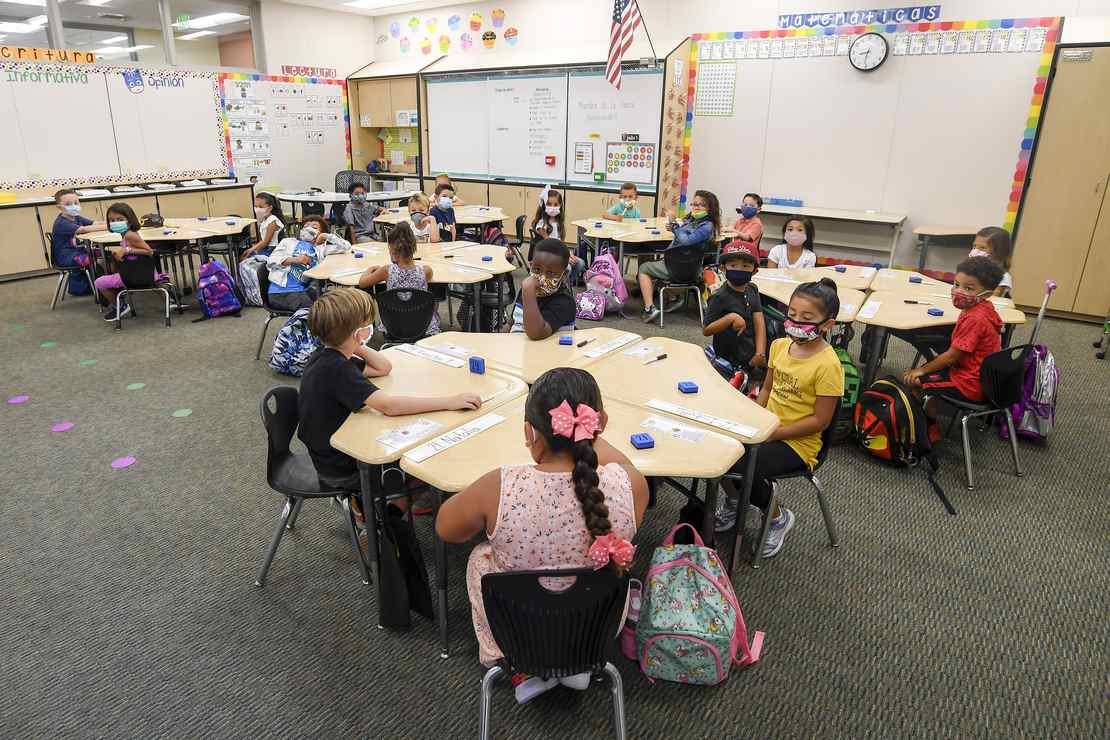
Last spring as it was becoming clear that pandemic learning loss was real and a serious problem for some kids, there were some voices suggesting the best approach to the problem was to not test for it. And some educations professionals went farther and claimed that standardized tests weren’t really measuring all the good things kids kept out of school were learning:
Jesse Hagopian, a Seattle high school teacher and writer, said testing to measure the impact of the pandemic misses what students have learned outside of physical classrooms during a year of overlapping crises in health, politics and police violence.
“They are learning about how our society works, how racism is used to divide,” he said. “They are learning about the failure of government to respond to the pandemic.”
This view was surprisingly widespread on the far left:
“It is especially kids of color who are presumed to be harmed by being at home,” said Dr. Ishimaru, who said her conversations with families of color suggested that some children preferred learning remotely, because they did not have to deal with micro and macroaggressions and other challenges they encounter in school.
She argued that many children learned plenty in the past year and a half — about loss and grief, about racism and resistance, about cooking and family traditions at home. “What if we were to focus on the learning found, and then we rebuild our education systems from that learning?” she said.
Recently recalled San Francisco school board president Gabriela Lopez said, “They’re just having different learning experiences than the ones we currently measure, and the loss is a comparison to a time when we were in a different space.”
The President of the LA Teacher’s Union outright said, “There is no such thing as learning loss.” She continued, “It’s OK that our babies may not have learned all their times tables. They learned resilience. They learned survival. They learned critical-thinking skills. They know the difference between a riot and a protest. They know the words insurrection and coup.”
Today the NY Times reports that contrary to all the self-serving nonsense for teacher’s unions, pandemic learning loss was very real and potentially millions of American children are severely behind in reading.
As the pandemic enters its third year, a cluster of new studies now show that about a third of children in the youngest grades are missing reading benchmarks, up significantly from before the pandemic.
In Virginia, one study found that early reading skills were at a 20-year low this fall, which the researchers described as “alarming.”
In the Boston region, 60 percent of students at some high-poverty schools have been identified as at high risk for reading problems — twice the number of students as before the pandemic, according to Tiffany P. Hogan, director of the Speech and Language Literacy Lab at the MGH Institute of Health Professions in Boston…
“We’re in new territory,” Dr. Hogan said about the pandemic’s toll on reading. If children do not become competent readers by the end of elementary school, the risks are “pretty dramatic,” she said. Poor readers are more likely to drop out of high school, earn less money as adults and become involved in the criminal justice system.
READ RELATED: Hawaii is set to be the only US state to still have an indoor mask mandate
It’s not just reading. Students are also behind in basic math skills and in speech. The article makes a big point of saying there’s no definitive evidence that masks are partially responsible for the speech deficits but that seems like a fairly obvious connection to make. How are kids supposed to learn to speak if they can’t see the teacher’s face? The Atlantic published a piece about this last week:
Americans have been arguing about pandemic restrictions for two years, and the debate is particularly fraught among parents of small children, for good reasons. While measures such as masking and isolation mean temporary discomfort or inconvenience for most people, their consequences for still-developing young children are more mysterious, and possibly more significant and lasting.
Children with speech or language disorders offer perhaps the clearest example of these murky trade-offs. Pandemic restrictions vary by state, county, and school district, but I spoke with parents in California, New York, Massachusetts, Washington, New Jersey, Iowa, and Maryland who said their children’s speech therapy has been disrupted—first by the loss of in-person therapy and then by masking requirements, in places that have them…
Many of the parents I spoke with are frustrated that they’ve been asked to compromise their children’s social and academic life in the name of public safety. The early years of a child’s life are important. Anything that threatens to interfere with development, whether that’s COVID-19 or the mitigations in place to avoid it, can feel like rolling the dice on a child’s future. In one way or another, all parents of young children have been forced to gamble during the pandemic. Many parents of kids with speech delays don’t like their odds.
My son is now in middle school but a few years ago he went to speech therapy in his elementary school. I can’t imagine trying to deal with that in the past two years. Esoteric Jeff has a son this age and he expressed some of his feelings about it.
I haven’t been angrier reading an article in 2 years. I hate the people who allowed this to happen to my son, and I think I will hate them forever. It will govern my attitude towards teacher’s unions and elite public health opinion forever. https://t.co/j17ogxBAw1
— Jeff B. is *BOX OFFICE POISON* (@EsotericCD) March 3, 2022
And because all the “independent” therapists have to cooperate with CPS policies (oftentimes legally, mostly because they have to coordinate w/them so often on overlapping care), they use the same standards, even though many hate them. People get reported for deviating.
— Jeff B. is *BOX OFFICE POISON* (@EsotericCD) March 3, 2022
This is my son’s one shot in life. HE DOES NOT GET A RE-DO OF HIS CRUCIAL DEVELOPMENTAL YEARS. This is the time. And these monsters did this to him. They took some of the most important years of his life away from him. For no articulable reason.
As a father, I can never forgive.
— Jeff B. is *BOX OFFICE POISON* (@EsotericCD) March 3, 2022
There are probably a whole lot of fathers and mothers out there who feel something similar. While union idiots were mouthing off about all the alternative learning kids were supposedly doing at home, the reality is that kids were falling behind, especially those kids, like Jeff’s son, who needed extra help. The pandemic was unavoidable but some of the decisions made in response to it, especially by teacher’s unions, have had a negative impact on children.
Source:






